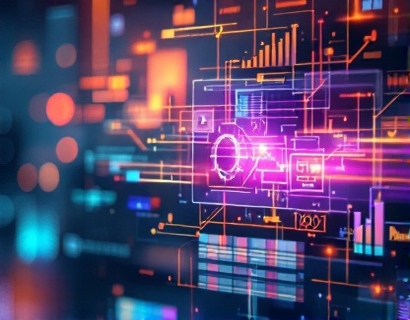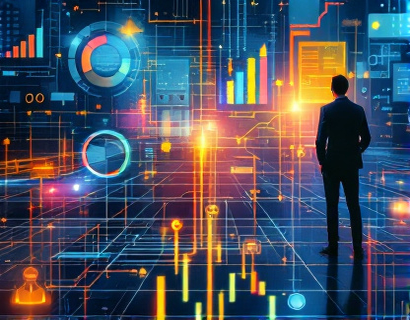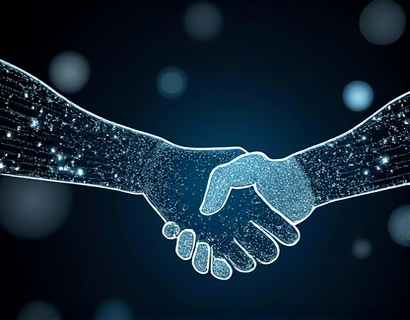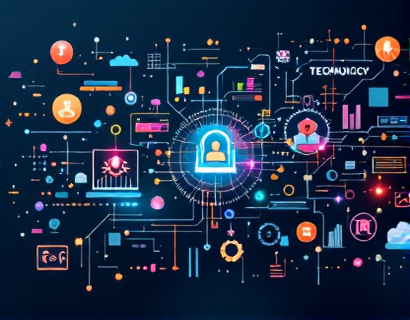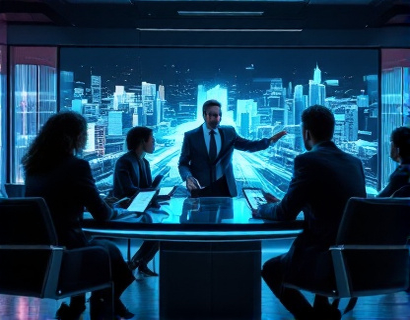Decentralized Solutions for Ucosystem Asset Verification: Enhancing Trust and Access
The rise of digital assets has brought about a paradigm shift in how we perceive and manage ownership and access to various resources online. Within ecosystems like Ucosystem, ensuring the authenticity and integrity of digital asset holdings is paramount. This article delves into the significance of decentralized solutions for verifying digital assets within such ecosystems, focusing on how these technologies can unlock premium access and exclusive features while maintaining a high level of security and efficiency.
Understanding the Need for Decentralized Verification
In traditional centralized systems, asset verification and access control are managed by a single entity or a small group of entities. This centralization, while providing a point of control, also introduces vulnerabilities such as single points of failure, potential for abuse, and lack of transparency. In the context of Ucosystem and similar digital asset platforms, a decentralized approach offers a more robust and trustworthy solution.
Decentralized verification leverages blockchain technology to create an immutable and transparent ledger of asset ownership and transactions. This ledger is maintained by a network of nodes rather than a central authority, ensuring that no single point can manipulate the data. This decentralized nature enhances trust among users, as the verification process is verifiable by anyone on the network.
How Decentralized Verification Works
The process of verifying digital assets in a decentralized manner involves several key steps. First, the asset's unique identifier, often a cryptographic hash, is recorded on the blockchain. This identifier is tied to the asset's metadata, including ownership information and transaction history.
When a user wishes to verify their asset holdings, the system queries the blockchain for the relevant data. This query is distributed across the network of nodes, each of which validates the request independently. Once validated, the nodes collectively confirm the asset's authenticity and ownership. This decentralized validation process ensures that the data is accurate and tamper-proof.
The verification result is then stored in the user's digital wallet or a dedicated application, providing a secure and accessible record of their asset holdings. This record can be used to unlock premium access and exclusive features within the Ucosystem, ensuring that only verified users can benefit from these advantages.
Benefits of Decentralized Asset Verification
One of the primary benefits of decentralized verification is the enhanced security it provides. By eliminating a central point of control, the risk of data breaches and manipulation is significantly reduced. Users can have confidence that their asset information is secure and that their ownership is accurately represented on the blockchain.
Another significant advantage is the increased transparency. Every transaction and verification process is recorded on the blockchain, making it accessible to all network participants. This transparency fosters trust among users and reduces the potential for fraudulent activities.
Decentralized verification also promotes greater accessibility. Users from around the world can verify their assets without relying on a central authority, making the process more inclusive and user-friendly. This is particularly beneficial for global Ucosystems where users may be spread across different jurisdictions with varying regulatory environments.
Unlocking Premium Access and Exclusive Features
For digital asset holders, verified access to premium features and exclusive content is a valuable perk. Within ecosystems like Ucosystem, premium access can include advanced tools, priority customer support, exclusive events, and enhanced privacy features.
By integrating decentralized verification into the access control system, Ucosystem can ensure that only verified users gain access to these premium features. This not only protects the integrity of the platform but also rewards users for maintaining the security and authenticity of their assets.
For instance, verified users might gain access to a dedicated forum for community discussions, early access to new features, or special discounts on services within the ecosystem. These perks not only enhance the user experience but also encourage users to maintain the highest standards of asset verification and security.
Technical Implementation of Decentralized Verification
Implementing a decentralized verification system requires a well-designed architecture that leverages blockchain technology and smart contracts. Here’s a high-level overview of the technical components involved:
- Blockchain Network: A public or private blockchain network is chosen based on the ecosystem's requirements. Ethereum, Binance Smart Chain, or Polkadot are popular choices due to their robust smart contract capabilities.
- Smart Contracts: These self-executing contracts with the terms directly written into code manage the verification process. They ensure that asset identifiers are correctly recorded and validated, and that access rights are granted based on verification status.
- Node Network: A distributed network of nodes is set up to maintain the blockchain. These nodes validate transactions and updates to the blockchain, ensuring the integrity of the verification data.
- User Interface: A user-friendly interface, such as a web application or mobile app, allows users to initiate verification requests, view their asset holdings, and access premium features.
The smart contract is programmed to handle the verification logic, including checking the asset's unique identifier against the blockchain, confirming ownership, and updating the user's access rights. This automation reduces the need for manual intervention and minimizes the risk of human error.
Case Studies and Real-World Applications
Several projects and platforms have successfully implemented decentralized verification to enhance asset management and access control. For example, certain cryptocurrency exchanges use decentralized identity verification to ensure that users are who they claim to be, reducing the risk of fraud and enhancing user trust.
In the context of Ucosystem, a hypothetical project could integrate a decentralized verification tool to allow users to prove ownership of their digital assets. This tool would enable users to access premium content such as advanced analytics, exclusive content libraries, and priority support, all while maintaining a high level of security and transparency.
Challenges and Considerations
While decentralized verification offers numerous benefits, there are also challenges and considerations to keep in mind. One of the primary challenges is scalability. Blockchain networks, especially public ones, can face performance issues as the number of transactions increases. To address this, layer 2 solutions and optimized smart contract designs can be employed to handle a higher volume of verification requests efficiently.
Another consideration is user education. Many users may be unfamiliar with blockchain technology and decentralized systems. Providing clear documentation, tutorials, and support can help users understand and effectively use the verification tool.
Regulatory compliance is also a critical factor. Different jurisdictions have varying regulations regarding digital assets and blockchain technology. Ensuring that the verification system complies with local laws and standards is essential for widespread adoption.
Future Trends and Innovations
The field of decentralized verification is rapidly evolving, with ongoing innovations aimed at improving efficiency, scalability, and user experience. One promising area is the integration of zero-knowledge proofs, which allow for verification without revealing sensitive information. This technology can enhance privacy while maintaining the integrity of the verification process.
Interoperability between different blockchain networks is another key trend. As more ecosystems adopt decentralized verification, the ability to seamlessly verify assets across different platforms will become increasingly important. Standards and protocols like Cosmos and Polkadot are paving the way for greater interoperability.
Additionally, the development of user-centric decentralized identity solutions can further simplify the verification process. These solutions aim to give users more control over their digital identities, making it easier to manage and verify their assets across various platforms.
Conclusion
Decentralized verification represents a significant advancement in the management and access control of digital assets within ecosystems like Ucosystem. By leveraging blockchain technology and smart contracts, these solutions offer enhanced security, transparency, and accessibility. As the digital asset landscape continues to grow, the adoption of decentralized verification will play a crucial role in building trust, ensuring integrity, and unlocking premium features for users.
While there are challenges to overcome, the potential benefits make the transition to decentralized verification a worthwhile endeavor. For digital asset holders and enthusiasts, embracing these technologies means not only securing their assets but also gaining access to a richer, more secure, and more rewarding ecosystem experience.




